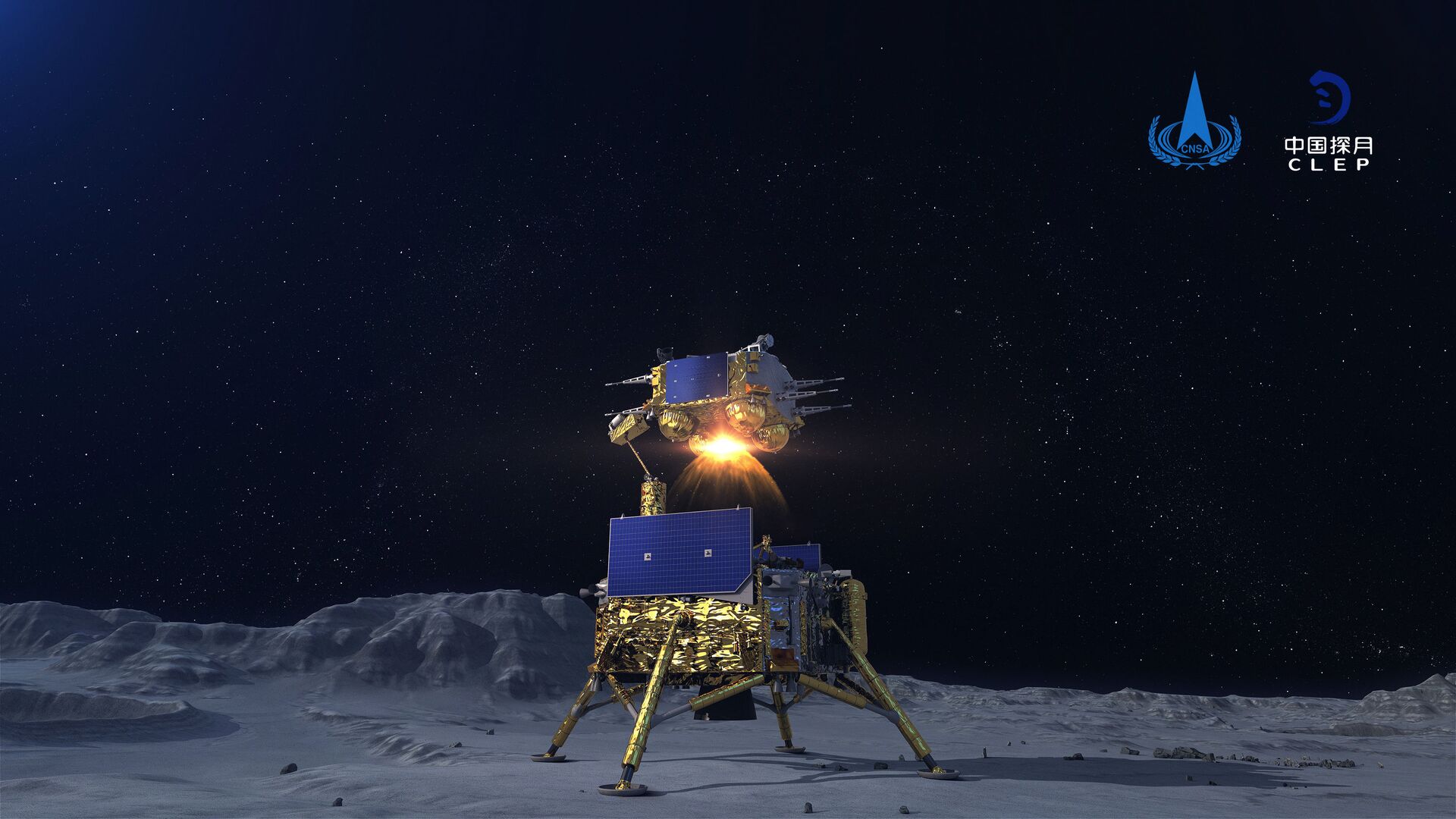Chinese Scientists Discover New Mineral in Lunar Samples Sent Back by Chang’e-5 Probe
17:56 GMT 09.09.2022 (Updated: 20:47 GMT 19.10.2022)

© AP Photo / China National Space Administration / Xinhua
Subscribe
Chinese researchers examining samples taken from the Moon’s surface have discovered a new type of mineral never seen before, as well as new samples to study of a promising fuel for nuclear fusion power plants.
China’s National Space Administration (CNSA) and the China Atomic Energy Authority jointly announced in Beijing on Friday the discovery of Changesite-(Y), the sixth unique mineral identified on the lunar surface and the first found by Chinese scientists, according to China Daily. The rest were discovered by either the US or the Soviet Union, the only other countries to return samples from the Moon.
The discovery was made by scientists at the Beijing Research Institute of Uranium Geology, a subsidiary of the China National Nuclear Corporation (CNNC).
The particle of Changesite-(Y), a phosphate material, was just 10 microns in diameter, or about one-tenth the width of a human hair, according to Wang Xuejun, a party official with the CNNC.
China’s Chang’e-5 lunar rover sent the samples back in December 2020, taken from a spot north of Mons Rümker in Oceanus Procellarum, on the northwestern corner of the side of the moon that always faces the Earth. They are the first samples to return in 44 years.

Photo taken on Dec. 4, 2020 shows the HL-2M Tokamak, China's new-generation "artificial sun," in Chengdu, southwest China's Sichuan Province. The HL-2M Tokamak went into operation on Friday and achieved its first plasma discharge, according to China National Nuclear Corporation (CNNC).
© Xinhua
CNSA distributed the samples to researchers for analysis beginning in July 2021, with the 17.5-gram samples going to 13 domestic research organizations working on 31 scientific projects.
Dong Baotong, vice-chairman of the China Atomic Energy Authority, said at a recent mineralogical conference that the discovery “provides more basic scientific data for the evaluation and development of lunar resources and has deepened mankind’s knowledge of the moon and the solar system,”
“China has also become the third country to retrieve lunar samples and discover new lunar minerals after the US and Russia,” he said, according to the South China Morning Post.
The researchers also found a sample of helium-3, a smaller-than-normal isotope of helium that has long been eyed as a potential fuel for nuclear fusion, a type of electrical generation that releases far more energy than fission-based nuclear power plants, but without the corresponding problems of radioactive materials.
The Moon has large amounts of helium-3, thanks to its exposure to solar wind, which Earth’s magnetic field prevents from interacting with the planet’s surface. Other places, such as the planet Juipter, have even higher quantities of helium-3. According to the European Space Agency, mining the gas is likely to become a major driving force behind future space exploration, especially by private companies.
China has become a major research hub for fusion power, with the technology being seen as key to both solving the global energy crisis and creating a realistic way to wean the global society off pollutive fossil fuels, the mining and burning of which contribute greatly to global warming.


